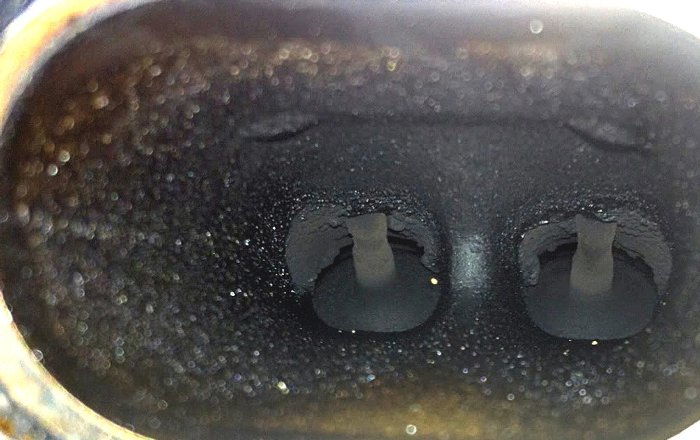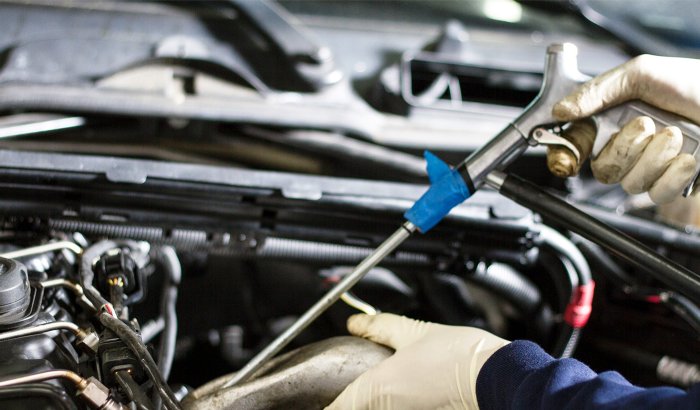Due to ever-tightening emissions regulations and demand for better fuel consumption figures, gasoline direct injection (GDI) systems are on the rise.
In the quest for these improvements for both our hip pocket and the environment, a constant gripe surfaces over and over again amongst the mechanic community...carbon build-up.
Or to be more specific, carbon build-up inside the cylinder head.

A gasoline direct injection engine with carbon build-up around the ports and valves
So why is this happening?
This carbon build-up is generally caused by a combination of poor quality fuel, short and/or frequent cold weather trips aswell as positive crankcase ventilation systems which often leave a thin layer of oil around the intake valves.
Timing can also play a part if the intake valve is open long enough to be exposed to unburnt fuel.
Finally the position of the GDI injector in the head plays a significant role in the accumulation of carbon deposits because it does not allow for fuel to reach the back of the intake valve, making it more difficult to keep valves and ports clean.
What are the symptoms?
With regard to drivability, one of the more common symptoms a customer will generally complain of is a lack of power, especially when driving at higher speeds. Other symptoms could include stalling, rough running or being difficult to start when cold. This could also be paired with excessive pinging on acceleration.
In some cases, carbon buildup may cause one or more cylinder misfire codes which will result in poor fuel consumption and performance.
Hard or Soft?
No, we’re not talking about taco’s.
Soft carbon is sooty and more easily dissolved using additives and intake cleaning products, while hard carbon is baked on and is more labor intensive to address often necessitating manual cleaning.
This transition is inevitable and will be accelerated depending on the owner's driving habits and what the initial cause of the build-up was.
Prevention
The best way to prevent soft carbon build-up is by sticking to the vehicle's logbook and conducting regular servicing, however this is often out of our hands as mechanics. As the old saying goes, ‘You can lead a horse to water..’
Also, oil changes are extremely important. Customers should always use a high quality oil to prolong the life of GDI components like the high pressure fuel pump. If a poor quality or incorrect oil is used or the vehicle does not follow the recommended oil change intervals, it may result in the failure of the high pressure pump or of other GDI components.

Removal
The use of fuel additives and intake cleaning/maintenance systems may also be effective in reducing carbon build-up. Pressurised fogger systems may also be used, some of which plumb into the vehicle's intake for a more aggressive clean.
Hard carbon is often more difficult and usually requires remove of the intake manifold to access the ports, followed by rotating the engine over by hand and cleaning each port.
Educating Customers
It’s important that we do our part in educating customers on their GDI-equipped vehicles and drive home the importance of using quality fuels and oils, regular servicing as well as preventative measures such as intake cleaning.
GDI is a great technology and if serviced properly is nothing to be intimidated by, as a vehicle owner or as a technician.